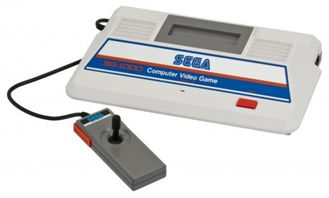Introduction to Video Game Consoles

Video game consoles have become an integral part of modern entertainment, offering a blend of interactive fun and technological innovation. This article delves into the history, types, and impact of video game consoles on society.
History of Video Game Consoles

The concept of video game consoles dates back to the early 1970s. The first commercially successful console, the Magnavox Odyssey, was released in 1972. Since then, the industry has seen a series of advancements, leading to the sophisticated consoles we have today.
Key milestones in the history of video game consoles include the release of the Atari 2600 in 1977, the Nintendo Entertainment System (NES) in 1983, and the PlayStation in 1994. These consoles paved the way for the gaming industry's rapid growth and evolution.
Types of Video Game Consoles

Video game consoles can be categorized into several types based on their design, functionality, and target audience. Here are some of the most popular types:
Home Consoles: These are the most common type of video game consoles, designed for use in homes. Examples include the PlayStation, Xbox, and Nintendo Switch.
Handheld Consoles: These consoles are portable and designed for on-the-go gaming. The Game Boy, PlayStation Vita, and Nintendo 3DS are notable examples.
Mini Consoles: These are compact versions of home consoles, offering a more affordable gaming experience. The OUYA and the Raspberry Pi are examples of mini consoles.
PC Consoles: These are essentially gaming PCs that can be used as consoles. They offer high-end graphics and performance but are not as portable as traditional consoles.
Impact of Video Game Consoles on Society

Video game consoles have had a significant impact on society, influencing various aspects of culture, technology, and social interaction.
Culture: Video games have become a global cultural phenomenon, with millions of people around the world participating in gaming communities and events.
Technology: The development of video game consoles has driven technological advancements in graphics, processing power, and connectivity. These innovations have also influenced other industries, such as virtual reality and augmented reality.
Social Interaction: Video game consoles have brought people together, fostering friendships and communities across the globe. Online multiplayer games have become a popular way for players to interact and compete with each other.
Future of Video Game Consoles

The future of video game consoles looks promising, with ongoing advancements in technology and new ways to engage with games. Some of the emerging trends include:
Cloud Gaming: Cloud gaming platforms like Google Stadia and Microsoft xCloud allow players to stream games directly to their devices, eliminating the need for powerful hardware.
Virtual Reality (VR): VR gaming is becoming increasingly popular, with consoles like the PlayStation VR and the Oculus Rift offering immersive experiences.
Augmented Reality (AR): AR gaming is expected to grow, with consoles integrating AR features to create unique and interactive experiences.
Conclusion

Video game consoles have come a long way since their inception, becoming an essential part of our lives. As technology continues to evolve, we can expect even more exciting developments in the world of video game consoles. Whether you're a casual gamer or a hardcore enthusiast, there's no denying the impact that these devices have had on our culture and society.
video game consoles gaming history types of consoles societal impact future trends

